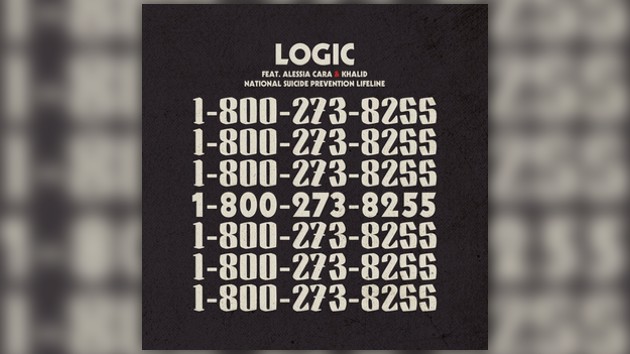When I first heard artist’s Logic song 1-800-273-8255, which is the number to the suicide prevention hotline, I was in awe and grateful for his courage to use his celebrity status to spread awareness of such an important topic: LIFE. And just like many people have done so already, I decided to adopt this song as an anthem for LIFE and against suicide. His lyrics reflect what many people in despair who have suicidal thoughts may experience. They also offer a message of hope and send the message to listeners that YOU ARE NOT ALONE.
Listen to 1-800-273-8255.
Suicide is an epidemic that impacts people regardless of status, gender, income, race, ethnicity, age. According to the World Health Organization, approximately 1 million people die of suicide each year. While suicidal thoughts and attempts do not discriminate, suicide is rising among young people. Suicide is the third leading cause of death among young people between 15 and 24 years old. And sadly enough, I have treated younger kids as young as 9 years old who have expressed suicidal ideation.
There are endless factors that lead to an individual thinking of potentially taking their life. Some include: depression, trauma, challenges at home, at school, community or work, bullying, harassment, sense of hopelessness, feeling alone, not understood and like they don’t belong, etc. While some people may be able to pinpoint their despair, many times a person experiencing suicidal thoughts may not even know why they are experiencing them. No matter the reason, the reality is that someone experiencing suicidal thoughts is in deep and overwhelming pain and may feel like the only way out of their pain is suicide. Rather than asking why? The questions or statements we should be asking or saying are: How can I help?, I am here to listen, I am here for you, You are not alone, Help me understand what you are experiencing?
Suicidal thoughts are a symptom of depression. While from time to time when people experience feeling down and hopelessness, there may be thoughts of “life would be easier if I wasn’t here,” or “I just want to go away,” or “this is so hard,” the difference between thinking and doing is having a plan. For instance, people may have suicidal ideation but may never think to actually do it, others may have suicidal thoughts and come up with a plan on how they would do it. But no matter whether someone is in thinking mode and doing mode, the important thing is to find help.
As a mental health therapist, I have provided intervention to dozens of people who have experienced suicidal thoughts and attempted suicide. Not too long ago, I was working on safety plans with clients at least once a week. Know that when someone opens up with you, they are looking for comfort and help. The reason I know for sure that there is HOPE is because I have seen firsthand people find their way back from hopelessness to HOPE. One of my first clients who at 13 disclosed he attempted suicide is now graduating high school and applying to colleges. A former young adult client who self-harmed, now utilizes expressive and creative ways to avoid cutting and instead when she may have the urge, she channels her pain into making beautiful necklaces and has become an expert at positive self-talk. An older client who lost her spouse and found it difficult to live life without her loving partner was able to find a renewed sense of purpose. She connected with a support group, discovered activities she had never done before that she now enjoys and has deepened her relationship with her children.
The key to it is intervention. And we can all do our part to help!
Here are 5 things you can do to help yourself or someone:
1. Know that other people have experienced suicidal thoughts. While suicide has a lot of stigma attached to it and people who have had suicidal thoughts or attempted experience shame, you are not alone in the sense that there are other people out there that can support you and others have experienced the same or similar despair, and with the right support you will be able to overcome your challenges. What’s important is getting help when hopelessness and suicidal thoughts begin to arise.
2. Lend a compassionate and nonjudgmental ear or seek for one. One of the main reasons people keep how they feel to themselves is the fear of being judged and misunderstood. When someone shares how they feel, they are being courageous. It takes courage and trust to come forward and express what one may be feeling. If someone ever shares with you what they are going through, acknowledge the big and courageous step they are taking. Thank them for their trust and hear them out without interruptions or personal opinions that may make the person feel worse. Some personal opinions or observations based on what you would have done that may get in the way of you helping are: But you are so strong, But you seem to have such a good life, But I have been through something similar and l didn’t have those thoughts. It is important to recognize that we are unique individuals and we may each cope with challenges differently based on our skills, resources, knowledge, support, etc. Some statements that may help people feel heard and understood can be conveyed by reflecting or repeating back what you are hearing. For instance: It sounds like you are going through a painful experience, It sounds like you are hurt, It sounds like you may have lost some hope. These statements can be followed by another one that offers support: I am here for you, I know people or resources that can be helpful, What is something that can help you feel better?
3. Make an inventory of your friends or other people who can support you. When we are in severe distress, we may not easily remember who we can count on. Spend some time today making a list of friends or people you know who you can turn to when in despair. These people can include clergy, a friend, school counselor, etc.
4. Create your wellness/safety plan. When in distress, we may need some help remembering our coping strategies or resources to count on. Spend some time today creating your own safety/wellness plan. You can use this safety plan template to guide you. Click here to download, fill it out and keep it handy for when you need it.
5. Save the following numbers on your phone and share or call when necessary. Text the word HOME To 741741 for crisis support 24/7. 1-800-273-8255 is the suicide prevention hotline available 24/7 or call 911. When to call each resource? The crisis text line can be the first step when we are feeling down or experiencing a strong emotion. A trained counselor will help callers go from a hot moment to a cool moment. When the crisis has escalated to suicidal thoughts, you can call the suicide prevention hotline. However, if your thoughts or someone’s thoughts have escalated from thinking about suicide to planning (having a specific plan on how suicide will be committed and having a date, place or weapon or thing to do it with), call 911 immediately.
Suicide is a permanent and most final maladaptive solution to what could be a temporary problem. Like I tell my clients, when in despair take a deep breath, or a few and notice your breathing. Follow with careful attention your in breath and out breath and think of each breath as an opportunity to keep on trying. Each breath represents hope, life, a second chance, an opportunity to start over. With help, we can rediscover and learn healthy solutions to deal with internal pain.

